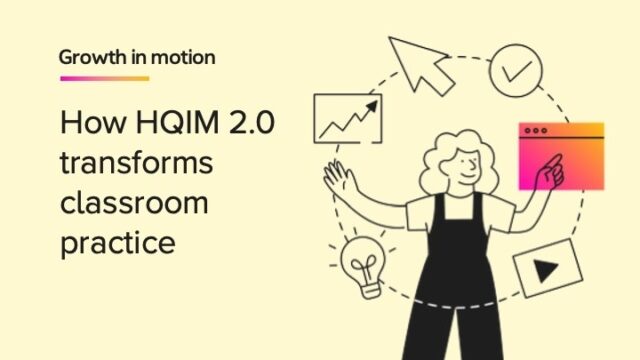
What’s in a word? Words on a page are just that—words on a page. It is the reader that brings meaning to them. Readers bring meaning to words by relating them to prior knowledge attained through hands-on/minds-on experiences. When asked “what’s in a word?” most educators would answer that words are fundamentally conceptual. Therefore, learning words in science should be approached as conceptual learning—words are concepts. Instead of learning words as definitions, vocabulary should be built by learning how concepts relate to each other with words being used to describe the knowledge base in science.
Embedding Vocabulary into Science Instruction
Vocabulary should not be front-loaded. Students need support in learning science terminology by making sense of phenomena and hands-on/minds-on learning experiences. Students can hide a lack of understanding behind using vocabulary words. Rather than requiring students to memorize vocabulary, students need to be supported as they develop the language of science. Therefore, instead of starting with vocabulary, scientific terminology should be embedded into science instruction.
Science as a discipline requires unique terminology. Scientists and engineers communicate using language with a specific vocabulary. Learning vocabulary through experiences is authentic to what scientists and engineers do. When students use proper terminology as they ask questions, conduct investigations, and provide evidence for their explanations, they work with vocabulary in meaningful ways. Students do not understand and retain the meaning of vocabulary by just reading about scientific terminology, writing definitions, and hearing words used by the teacher. The use of scientific vocabulary needs to be developed by using it while conducting science activities.
Learning Vocabulary through Authentic Experiences
HMH Into Science uses a variety of approaches to support learning vocabulary through authentic scientific experiences.
- Balance of Hands-On/Minds-On Activities and Reading: The sequence begins with hands-on/minds-on activities, provides opportunities to discuss the activities, and prepares students to construct meaning by reading about science. This sequence gives students the prior knowledge required to understand and retain vocabulary.
- Scaffolded Instruction to Support Understanding: Vocabulary is the key to reading comprehension. Readers can’t understand a science text they are reading without knowing what the words mean.
- Explicit Instruction: When students receive explicit science instruction, it enables them to acquire the literacy skills needed to learn the discipline of science. This develops interest in scientific vocabulary and an understanding of how words relate to each other.
Ultimately, science-specific vocabulary is best learned in action, as students see root words and prefixes in the context of the topic being studied. They don’t learn word lists; instead, they learn words as concepts. As educators, we help students turn those “words on a page” into “words on a path”—a path that leads to deeper understanding as students grow into scientists!
***
The views expressed in this article are those of the author and do not necessarily represent those of HMH.
Learn more about HMH Into Science K–8, enabling teachers to guide students in learning through exploration, analysis, application, and explanation.
Be the first to read the latest from Shaped.












